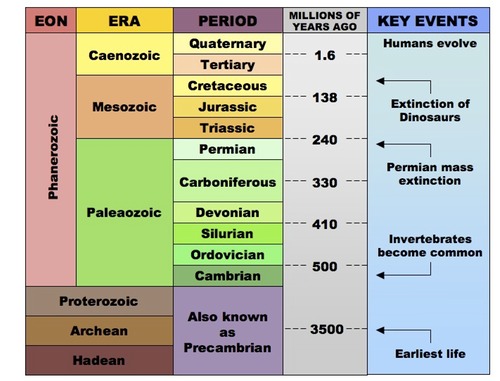

HOMO HABILIS: But if you look at our genus (Homo), Homo Habilis arose 2.8 million years ago in Africa. They had modern faces and used stone tools. Advice on using this visualization in the classroom: Here’s a breakdown of the human timeline: HOMO SAPIENS: The earliest anatomically modern human (Homo sapiens) fossil found was dated at 200,000 years old in Morocco, Africa. This eon is named after Hades, the Greek god of the underworld, and during this period the Earth was extremely hot. Formal geologic time begins at the start of the Archean Eon (4.0 billion to 2.5 billion years ago) and continues to the present day.

This addresses relative passage of time and conditions but lacks a specific reference or understanding of the passage of the billions to millions of years of time passing to allow this to occur which must be supplemented by the instructor. The vast expanse of geological time has been separated into eras, periods, and epochs. The oldest of the geologic eons is the Hadean, which began about 4.6 billion years ago with the formation of Earth and ended about 4 billion years ago with the appearance of the first single-celled organisms. geologic time, the extensive interval of time occupied by the geologic history of Earth. These sheets are used as reference pages to assist students in correlating the various changes that occur over geologic time and how they relate to one another and/or make conditions right for another to occur.

Context How this visualization is used in class:
#HISTORICAL GEOLOGY TIMELIME PDF#
The packaged PDF includes Precambrian, Paleozoic, Mesozoic & Cenozoic Eras (1 page each). These 11x14 diagrams show the distribution of geologic, biologic and climatic change over Earth's history.


 0 kommentar(er)
0 kommentar(er)
